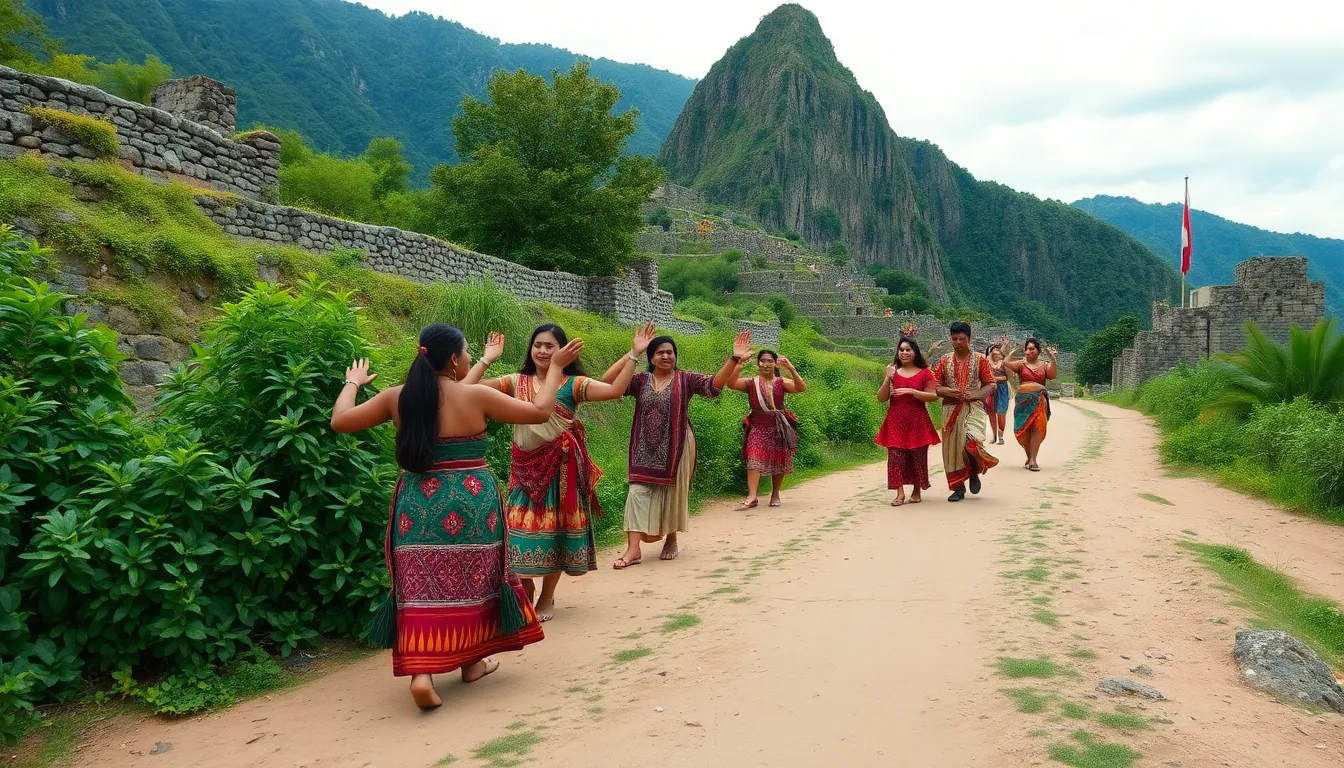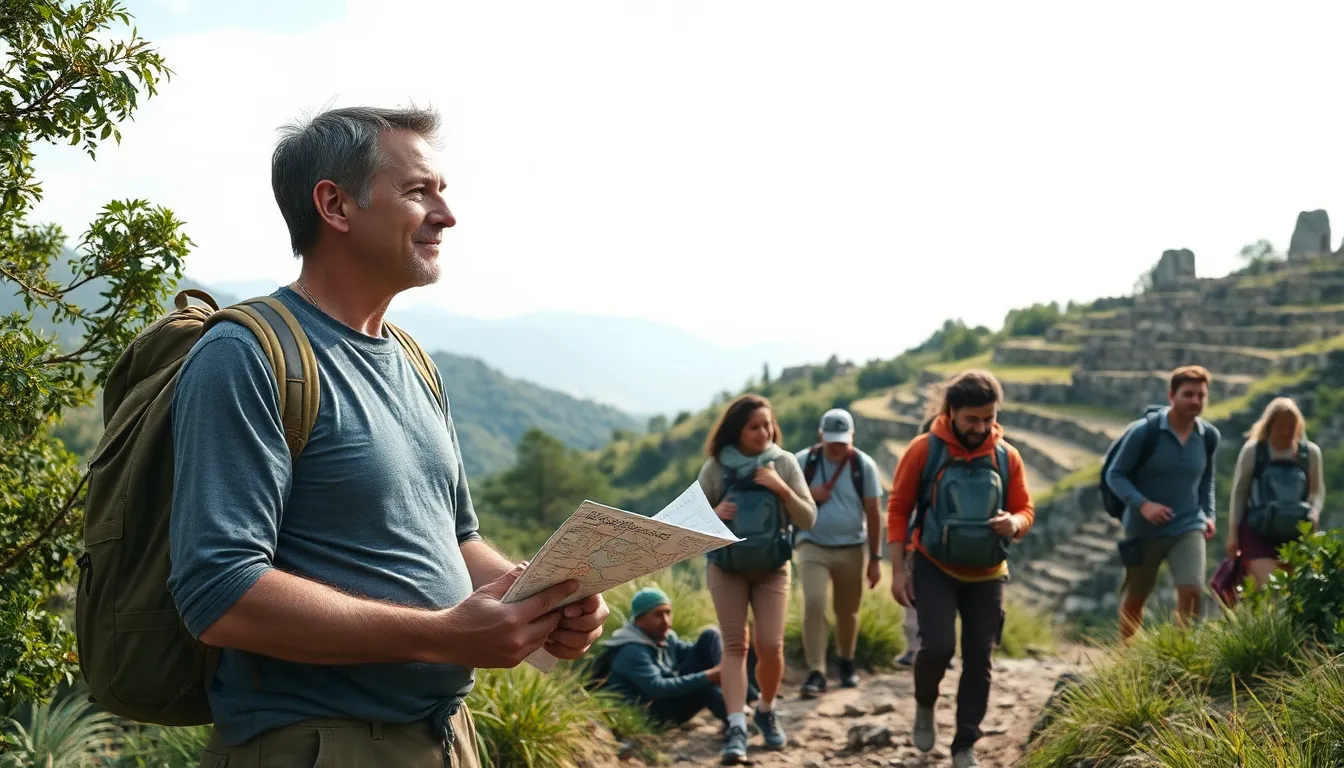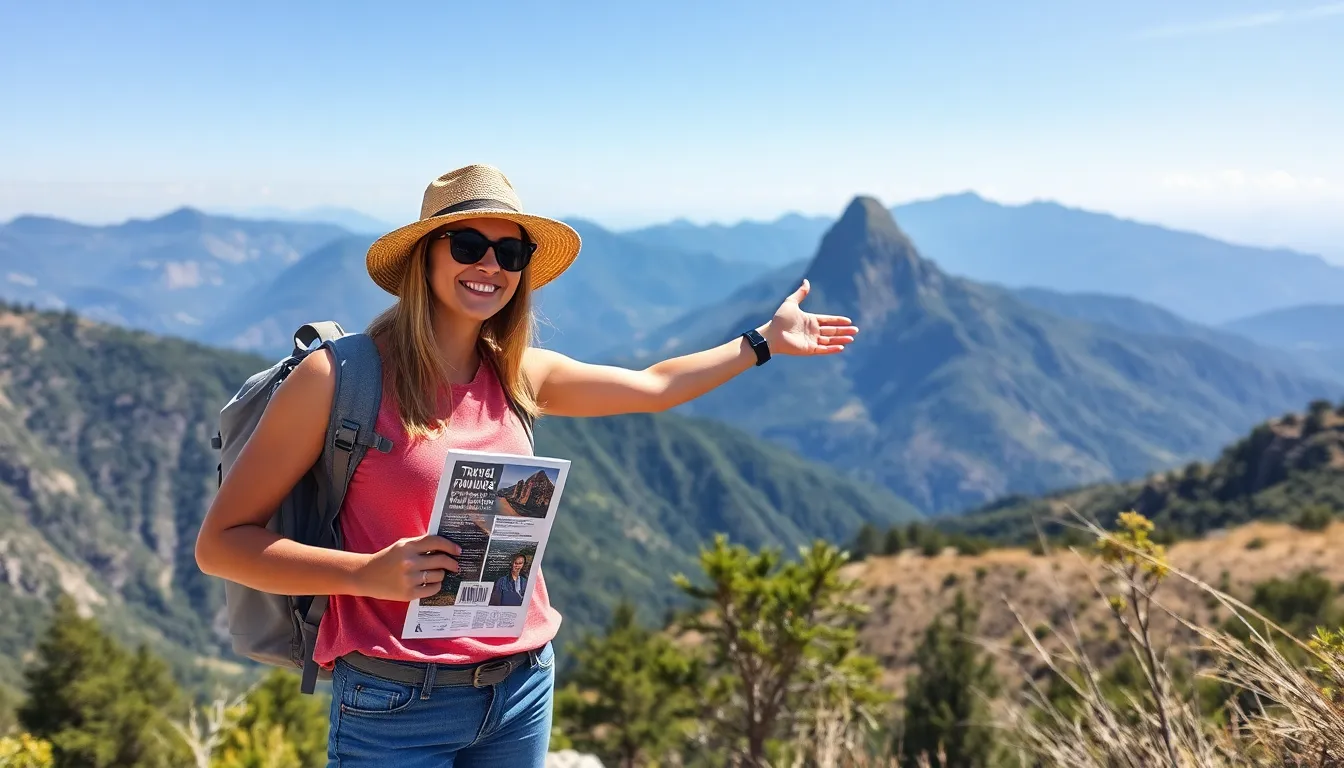Ever wondered what it’d be like to walk in the footsteps of ancient civilizations? Ancient path retracing offers a thrilling opportunity to explore forgotten trails and uncover the secrets of the past. Imagine yourself wandering through landscapes that once buzzed with life, where every rock and tree has a story to tell.
Table of Contents
ToggleOverview of Ancient Path Retracing
Ancient path retracing involves rediscovering old trails that connect to historical events or societies. This practice allows explorers to engage with the past and experience the landscapes that shaped civilizations. Participants often walk in the footsteps of those who tread these paths centuries ago, providing a unique perspective on history.
Historical significance anchors many of these routes. They frequently lead to archaeological sites, ancient cities, or cultural landmarks that provide insight into former societies. Researchers and enthusiasts alike find value in understanding how these pathways influenced trade, migration, and cultural exchanges.
Modern technologies enhance the path retracing experience. Geographic information systems (GIS) and digital mapping tools aid in pinpointing forgotten trails. These tools allow retracers to create detailed maps, emphasizing specific features that embody historical relevance. Additionally, storytelling complements the physical journey, enriching the experience with narratives about the people and events that defined these paths.
Nature often reclaims these ancient routes, intertwining history with wilderness. Explorers may encounter a variety of landscapes, from rugged terrains to serene valleys, all while retracing steps taken by previous generations. As individuals embark on these journeys, they may uncover artifacts or remnants that serve as tangible links to the past.
Community involvement plays a critical role in preserving these paths. Local organizations often dedicate efforts to maintain and promote trails that hold cultural significance. Collaborative initiatives can transform ancient paths into vital resources for education and tourism, inviting more people to retrace their steps while fostering connections to history.
Historical Significance

Ancient path retracing serves as a vital method for connecting present-day individuals with bygone eras. It reveals the stories and cultural dimensions that shaped civilizations.
Cultural Heritage
Cultural heritage emerges through the preservation of trails that reflect traditional practices and historical narratives. These paths connect communities to their ancestral roots, fostering a sense of identity. Cultural festivals often revolve around these routes, highlighting the traditions and customs of local populations. Explorers encounter diverse experiences, ranging from stories shared by elders to performances that celebrate local history. Engaging with these paths not only honors legacy but also promotes cultural exchange among different groups.
Archaeological Discoveries
Archaeological discoveries enhance the understanding of ancient civilizations by providing physical evidence of their existence. Tools, pottery, and structures found along these trails often reveal trade routes and migratory patterns. Each discovery contributes unique insights into daily life and societal organization. Collaboration with archaeologists ensures careful excavation and documentation of artifacts, leading to broader knowledge of historical contexts. Insights gathered from these findings help create a narrative that honors ancient societies while guiding modern exploration and education.
Techniques Used in Retracing Paths
Ancient path retracing involves various techniques that enhance the exploration of forgotten routes. These methods blend modern technology and traditional practices, providing a comprehensive approach to uncovering history.
Modern Technology
Geographic Information Systems (GIS) play a crucial role in mapping ancient paths. Utilizing satellite imagery helps retracers visualize topography and track changes over time. Digital mapping tools allow explorers to create interactive maps, offering insights into historic significance. Mobile applications often assist in on-the-go navigation, providing valuable data about the trails. Drones might capture aerial views, revealing inaccessible terrain and enabling detailed documentation. These innovations make the exploration process more efficient and engaging.
Traditional Methods
Traditional methods of path retracing have stood the test of time. Oral histories shared by local communities preserve knowledge of ancient routes. Use of physical markers, like stones or trees, helps travelers navigate through dense landscapes. Hand-drawn maps, created by previous explorers, often serve as guides. Additionally, studying historical texts provides context about routes and the civilizations that utilized them. Engaging with these older techniques complements modern technology, creating a rich tapestry of exploration and understanding.
Notable Projects and Findings
Explorations into ancient path retracing reveal significant insights into historical contexts and societies.
Case Study 1: The Inca Trail
The Inca Trail in Peru showcases a remarkable network of ancient pathways linking various archaeological sites. This trail, leading to Machu Picchu, emphasizes the Incas’ engineering prowess and cultural importance. Researchers utilize GPS and GIS technologies to map the area, unveiling its role in trade and pilgrimages. Artifacts found along the trail include pottery and tools, which enhance understanding of daily life during the Inca Empire. Community efforts ensure preservation, allowing tourists to appreciate both the history and natural beauty of the region.
Case Study 2: The Silk Road
The Silk Road served as a vital trade network connecting East and West. This path facilitated cultural exchanges and economic interactions among ancient civilizations. Collaborative studies along the route reveal ancient caravanserais that provided rest for traders. Archaeologists discovered coins and ceramics, shedding light on trade dynamics during the era. Modern retracing projects highlight the importance of this route and its lasting influence on global commerce. Engaging local communities in preservation efforts ensures the Silk Road remains a living testament to historical connections.
Impact on Modern Society
Ancient path retracing significantly shapes modern society by enhancing tourism and fostering environmental awareness.
Tourism and Education
Explorers flock to ancient paths, drawn by the allure of history and culture. Sites along these routes often become focal points of tourism, generating economic benefits for local communities. Educational programs affiliated with these trails provide invaluable insights into historical connections and local traditions. Interactive exhibitions highlight the significance of these pathways, attracting visitors and scholars alike. Cultural festivals frequently celebrate ancient routes, immersing attendees in local customs and practices. These experiences enrich tourists’ understanding of heritage while promoting cultural exchange. Engaging local communities in tourism initiatives further solidifies their pride and ownership of historical narratives.
Environmental Awareness
Engaging with ancient paths fosters a deeper appreciation for nature and environmental sustainability. Many of these trails traverse diverse ecosystems, showcasing native flora and fauna. Travelers often recognize the importance of preserving natural landscapes intertwined with cultural heritage. Sustainability practices emerge alongside these initiatives, emphasizing eco-friendly tourism and responsible exploration. Local organizations frequently lead conservation efforts, ensuring protection for vulnerable ecosystems along the routes. Educational campaigns raise awareness of environmental issues tied to these ancient pathways. By exploring these routes, individuals can connect with the environment, nurturing stewardship for the land and its historical significance.
Conclusion
Ancient path retracing serves as a bridge between past and present. It invites individuals to engage with the rich tapestry of history while exploring the landscapes that shaped civilizations. By combining modern technology with traditional practices, explorers uncover the stories embedded in these forgotten trails.
Community involvement is essential for preserving these paths, ensuring they remain vibrant resources for education and tourism. As people retrace these ancient routes, they foster a deeper connection with their heritage and the environment. This journey not only enriches personal experiences but also promotes awareness of the cultural and ecological significance of the landscapes they traverse.







